#Queen Isabeau of France
Explore tagged Tumblr posts
Text
"Over the course of her reign, [Isabeau of Bavaria] started a new fashion for a green lying-in room, a color she particularly liked and which symbolized youth, hope and renewal. Green, which was first reserved for the queen, subsequently became more widely used throughout other aristocratic courts, particularly Burgundy. According to Éléonore de Poitiers, this color was specific to them. Countesses and other great ladies, she wrote, ‘should not have a green room like the queen and the princesses have’."
-Murielle Gaude-Ferragu, Queenship in Medieval France, 1300-1500
#I love that Isabeau had her signature colour#historicwomendaily#isabeau of bavaria#elisabeth of bavaria#french history#fashion#medieval#my post
37 notes
·
View notes
Text
Ages of French Queens at First Marriage
I have only included women whose birth dates and dates of marriage are known within at least 1-2 years, therefore, this is not a comprehensive list.
This list is composed of Queens of France until the end of the House of Bourbon; it does not include Bourbon claimants or descendants after 1792.
The average age at first marriage among these women was 20.
Ermentrude of Orléans, first wife of Charles the Bald: age 19 when she married Charles in 842 CE
Richilde of Provence, second wife of Charles the Bald: age 25 when she married Charles in 870 CE
Richardis of Swabia, wife of Charles the Fat: age 22 when she married Charles in 862 CE
Théodrate of Troyes, wife of Odo: age 14 or 15 when she married Odo in 882 or 883 CE
Frederuna, wife of Charles III: age 20 when she married Charles in 907 CE
Beatrice of Vermandois, second wife of Robert I: age 10 when she married Robert in 990 CE
Emma of France, wife of Rudolph: age 27 when she married Rudolph in 921 CE
Gerberga of Saxony, wife of Gilbert, Duke of Lorraine, and later of Louis IV: age 16 when she married Gilbert in 929 CE
Emma of Italy, wife of Lothair: age 17 when she married Lothair in 965 CE
Adelaide-Blanche of Anjou, wife of Stephen, Viscount of Gévaudan, Raymond III, Count of Toulouse, and later Louis V: age 15 when she married Stephen in 955 CE
Bertha of Burgundy, wife of Odo I, Count of Blois, and later Robert II: age 19 when she married Odo in 984 CE
Constance of Arles, third wife of Robert II: age 17 when she married Robert in 1003 CE
Anne of Kiev, wife of Henry I: age 21 when she married Henry in 1051 CE
Bertha of Holland, first wife of Philip I: age 17 when she married Philip in 1072 CE
Bertrade of Montfort, wife of Fulk IV, Count of Anjou, and second wife of Philip I: age 19 when she married Fulk in 1089 CE
Adelaide of Maurienne, second wife of Louis VI: age 23 when she married Louis in 1115 CE
Eleanor of Aquitaine, first wife of Louis VII and later Henry II of England: age 15 when she married Louis in 1137 CE
Adela of Champagne, third wife of Louis VII: age 20 when she married Louis in `1160 CE
Isabella of Hainault, first wife of Philip II: age 10 when she married Philip in 1180 CE
Ingeborg of Denmark, second wife of Philip II: age 19 when she married Philip in 1193 CE
Agnes of Merania, third wife of Philip II: age 21 when she married Philip in 1195 CE
Blanche of Castile, wife of Louis VIII: age 12 when she married Louis in 1200 CE
Margaret of Provence, wife of Louis IX: age 13 when she married Louis in 1234 CE
Isabella of Aragon, first wife of Philip III: age 14 when she married Philip in 1262 CE
Marie of Brabant, second wife of Philip III: age 20 when she married Philip in 1274 CE
Joan I of Navarre, wife of Philip IV: age 11 when she married Philip in 1284 CE
Margaret of Burgundy, wife of Louis X; age 15 when she married Louis in 1305 CE
Clementia of Hungary, second wife of Louis X: age 22 when she married Louis in 1315 CE
Joan II, Countess of Burgundy, wife of Philip V: age 15 when she married Philip in 1307 CE
Blanche of Burgundy, first wife of Charles IV: age 12 when she married Charles in 1308 CE
Marie of Luxembourg, second wife of Charles IV: age 18 when she married Charles in 1322 CE
Joan of Évreux, third wife of Charles IV: age 14 when she married Charles in 1324 CE
Bonne of Luxembourg, first wife of John II: age 17 when she married John in 1332 CE
Joan I, Countess of Auvergne, wife of Philip of Burgundy, and later John II: age 12 when she married Philip in 1338 CE
Joanna of Bourbon, wife of Charles V: age 12 when she married Charles in 1350 CE
Isabeau of Bavaria, wife of Charles VI: age 15 when she married Charles in 1385 CE
Marie of Anjou, wife of Charles VII: age 18 when she married Charles in 1422 CE
Charlotte of Savoy, second wife of Louis XI: age 9 when she married Louis in 1451 CE
Anne of Brittany, wife of Maximilian I, HRE, Charles VIII and later Louis XII: age 13 when she married Maximilian in 1490 CE
Joan of France, first wife of Louis XII: age 12 when she married Louis in 1476 CE
Mary Tudor, third wife of Louis XII: age 18 when she married Louis in 1514 CE
Claude of France, first wife of Francis I: age 15 when she married Francis in 1514 CE
Eleanor of Austria, wife of Manuel I of Portugal and later second wife of Francis I: age 20 when she married Manuel in 1518 CE
Catherine de' Medici, wife of Henry II: age 14 when she married Henry in 1533 CE
Mary, Queen of Scots, wife of Francis II: age 16 when she married Francis in 1558 CE
Elisabeth of Austria, wife of Charles IX: age 16 when she married Charles in 1570 CE
Louise of Lorraine, wife of Henry III: age 22 when she married Henry in 1575 CE
Margaret of Valois, first wife of Henry IV: age 19 when she married Henry in 1572 CE
Marie de' Medici, second wife of Henry IV: age 25 when she married Henry in 1600 CE
Anne of Austria, wife of Louis XIII: age 14 when she married Louis in 1615 CE
Maria Theresa of Spain, wife of Louis XIV: age 22 when she married Louis in 1660 CE
Marie Leszczyńska, wife of Louis XV: age 22 when she married Louis in 1725 CE
Marie Antoinette, wife of Louis XVI: age 15 when she married Louis in 1770 CE
38 notes
·
View notes
Text
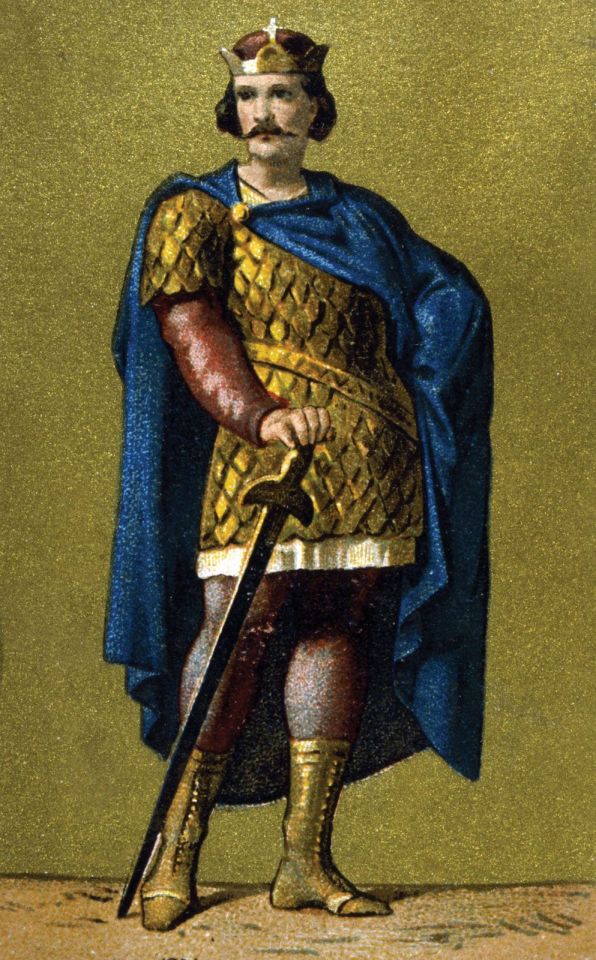



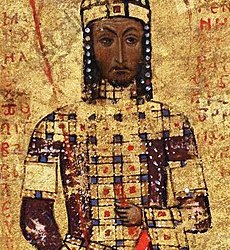


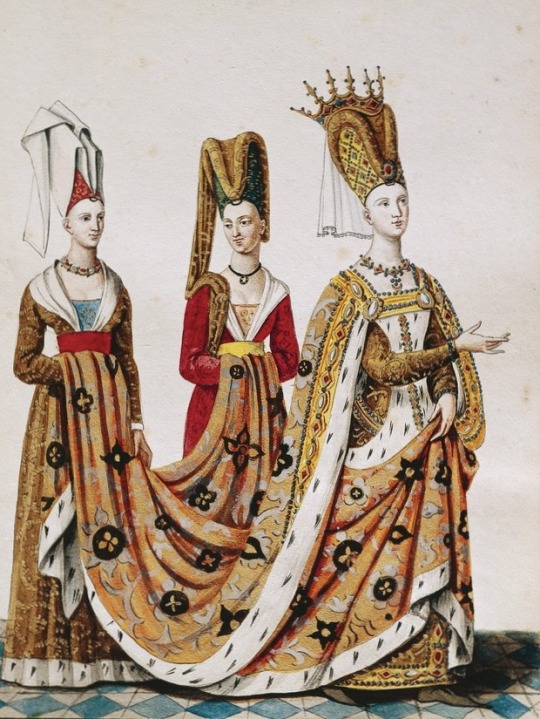
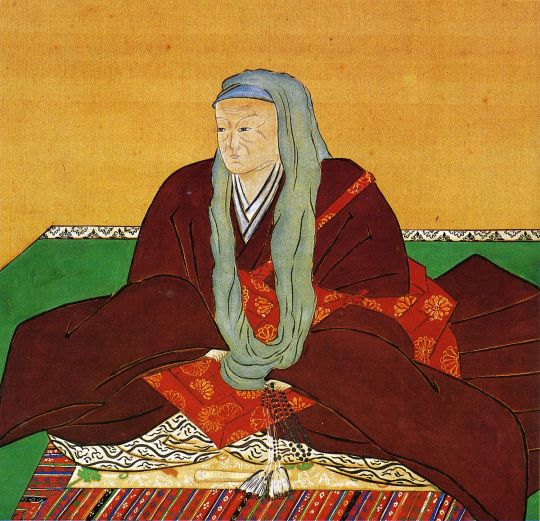


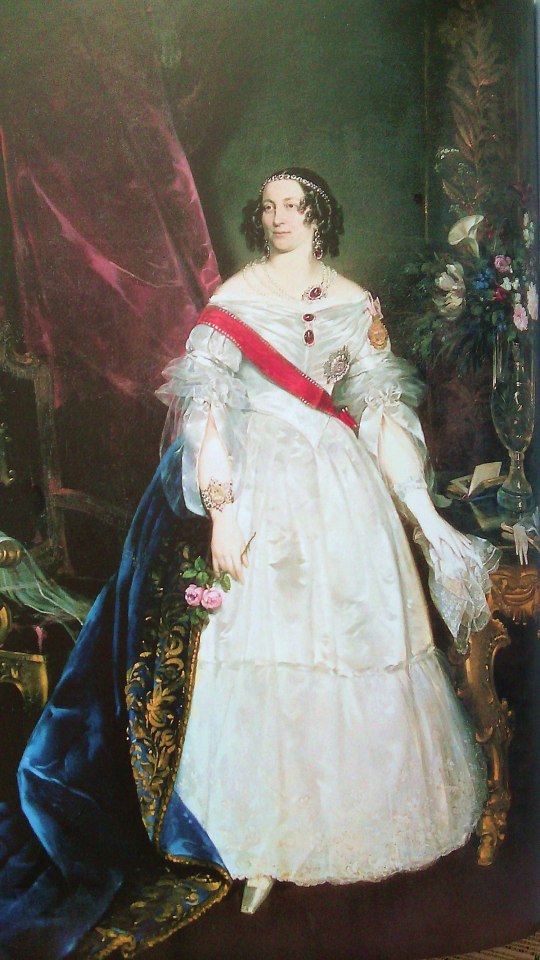

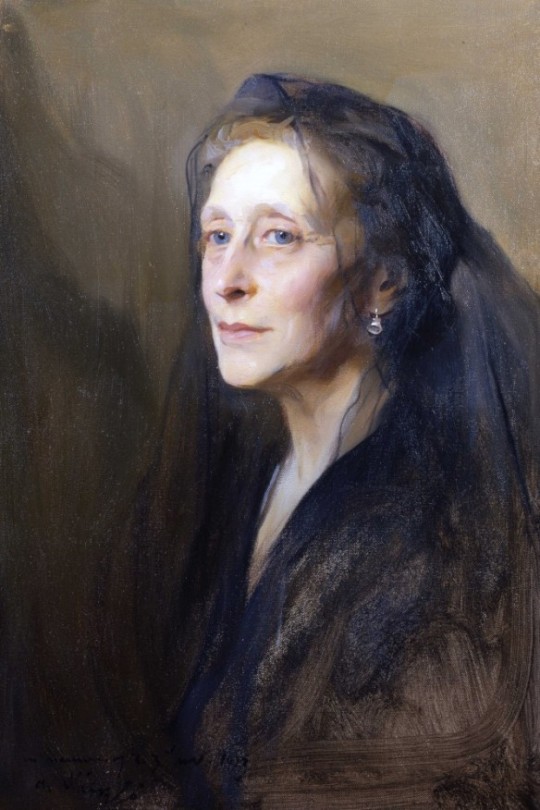
Royal Deaths, 24th September.
768 - Pippin III, the short, King of France.
911 - Louis the child, last Carolingian German King.
1120 - Welf II, Duke of Bavaria.
1143 - Agnes of Germany, daughter of Henry IV, Holy Roman Emperor.
1180 - Manuel I Komnenos, Emperor of the Byzantine Empire.
1228 - Saint Stefan Nemanjic, Grand Prince of Serbia
1230 - Alfonso IX, King of León and Galicia.
1435 - Isabeau of Bavaria, Queen and wife of Charles VI of France, who ruled during her husband's periods of insanity.
1732 - Emperor Reigen, 112th Emperor of Japan.
1812 - Friedrich Karl August, Prince of Waldeck and Pyrmont.
1834 - Pedro I, Emperor of Brazil and King of Portugal.
1860 - Marie of Württemberg, Duchess of Saxe-Coburg and Gotha, second wife and niece of Ernst I, Duke of Saxe-Coburg and Gotha.
1891 - Alexandra of Greece and Denmark, Grand Duchess Alexandra Georgievna of Russia, daughter of King George I of Greece, wife of Grand Duke Paul Alexandrovich of Russia.
1930 - Marie Juliette Louvet, mistress of Prince Louis Il of Monaco, mother of his only child Princess Charlotte of Monaco.
1950 - Princess Victoria of Hesse and by Rhine, Marchioness of Milford Haven, granddaughter of Queen Victoria.
3 notes
·
View notes
Text
Day 5: Isabeau of Bavaria
Isabeau of Bavaria (also spelled Isabelle or Elisabeth)
Born: c. 1370 Died: September 1435
Parents: Stephen III of Bavaria-Ingolstadt and Taddea Visconti of Milan. Queen of France Children: Isabella, Queen of England Joan, Duchess of Brittany Marie, Prioress of Poissy Michelle, Duchess of Burgundy Louis, Dauphin of Viennois John, Dauphin of Viennois Catherine, Queen of England Charles VII of France
Isabeau was the only daughter of Duke Stephen III of Bavaria-Ingolstadt and Taddea Visconti of Milan and granddaughter of the Holy Roman Emperor Louis IV.
Isabeau was sent to France at the suggestion of her uncle to be considered a potential bride for Charles VI of France. The teenaer was prepared by her aunt, taught French customs and received french styled dresses. She went to France on the pretext of a pilgrimage. Her father refused for her to be examined in nude as it was customary at the time. Upon arriving in France she impressed despite not speaking French or meeting the beauty standards of the time, it is likely she had Italian features like her mother. Charles seemed smitten with her moving up the wedding. The two were married in 1285. Isabeau was 15/16 at the time. Charles lavished her with gifts and visited her at Château de Vincennes where she resided while he was on a military campaign against England.
The coronation of Isabeau took place on 23 August 1389 with a grand ceremony. The procession lasted the whole day.
Charles suffered from an illness that caused him moments of insanity. Often he asked for Isabeau to be removed as he did not recognise her. Isabeau was accused of abandoning him when she moved her residence to Hôtel Barbette. Charles was provided with a mistress by his advisors but in his moment of lucidity he exchanged letters and gifts with Isabeu. His illness continued until his death.
In the 1390s Isabeau was made the guardian of the Dauphin and the co-guardian of their children. She was responsible for the education and protection of their son. As Charles’s bouts of illness were more frequent Isabeau became the leader of the regency council.
As Isabeau sided with the king’s brother, Orléans, in the conflict between him and the burgundians rumors started to circulate that they were lovers. John the Fearless, the new Duke of Burgundy after his father’s death, raised an army and entered Paris. Isabeau and Orléans retreated to the fortified castle of Melun with the royal children, however John took possession of the Dauphin. The Duke of Berry, the Dauphin’s uncle, took control of the child. The fact that Charles was lucid for about a month also helped. Isabeau was tasked with mediating the dispute.
After Orléans' assassination, Isabeau’s concern was the safety of the Dauphin, going as far as to convince Charles to give his 13 year old son power in the absence of the queen. Isabeau created alliances and switched sides in order to protect the heir to the throne. A double marriage was arranged in 1409 in order to diffuse tensions between burgundians and Orléanists in which Isabeau clearly defined the family hierarchy and her role.
Despite her best effort to stop a civil war, in 1411 the Armagnac–Burgundian Civil War broke out. The dauphin, aged 15, did not have the power or a capable army to defeat John the Fearless. Isabeau allied herself with Charles of Orléans in 1414 instead of allowing her son, aged 18, to lead. The Dauphin changed sides. While the civil war continued, France suffered a blow from England at Agincourt in 1415. The Dauphin died in December 1415 leaving his 17 year old brother and burgundian supporter as heir. In 1417 the new heir died, the new Dauphin aged 14 was Isabeau's last son. He was a sympathizer of the Armagnacs. At the time Isabeau was imprisoned by Armagnac but was freed by the Duke of Burgundy. From that moment she supported the burgundians Treaty of Troyes in 1420.
At first, Isabeau was the sole regent but yielded her position to John the Fearless in January 1418. Together they took control of Paris and slaughtered the Armagnacs. The Dauphin fled the city. John was assassinated in a plot by Dauphin Charles. After the assassination he was disinherited.
By 1419 Henry V of England occupied most of Normandy. In 1420, in the absence of an heir, Isabeau accompanied King Charles to sign the Treaty of Troyes. Due to his illness, Isabeau signed the treaty. Their daughter, Catherine, went on to marry Henry V as part of the agreement.
Isabeau died in late September 1435 in Paris.
The accounts on her appearance are contradictory, some describing her as small and brunette others as tall and blonde. She spoke with a heavy German accent that made her stand out at the French court. She was a skilled diplomat, navigating court politics with ease. She interfed on several occasions on matters of great importance and foreign affairs. She mediated conflicts and was trusted by the king. Like most of the Valois, Isabeau had a fondness for art, loved jewelry and commissioned particularly beautiful pieces. She left many personal possessions and properties, in life and in her will, toNotre Dame, St. Denis, and the convent in Poissy. Isabeau was close with her children throughout their childhood and even after they were married. She kept them close to her, had them travel with her, bought them gifts and had her daughters educated.
#women in history#women history#french history#bavaria#queen of france#france#catherine of valois#1400s#15th century#medieval history#medieval
5 notes
·
View notes
Text
Madame Putiphar Read Along: Prologue
so it begins!! :D
(I am using the Valdemar Gótica edition in charge of Mauro Armiño, and the french text in gutenberg dot org)
Prologue
(The work is dedicated to L.P., Lucinde Paradol, an actress Petrus had loved since 1831)
The Poet sets the scene within his sombre heart. 3 Knights battle in it for its dominion, with ceasless fury. The Poet’s agonic cries only increase the knight’s bloodlust. The struggle will be lifelong, the Poet knows he has no choice in the outcome, and he knows the victory of one of the Knights will be his doom.
The knights represent a classic allegorical theme: the Three Ages of Man. But also three attitudes:
-libertinage and artistic glory,
-religious or intellectual seclusion,
-suicide, a clean death before the world and its ways forces the Poet to compromise himself
They also reflect in a general structural way, the vital paths of our characters. This pattern of the three possible paths, the three ages of men, is very ancient. In western culture we usually start with greek philosophers and matematicians considering it the perfect number, a number that encompassed the three narrative acts. It’s a recurring theme in most religions, fairy and folk tales, and mythology. It is also a number that seems to appeal to how our brains work, easing the comprehension of decades spanning events in narratives: in fairytales, we usually get 3 attempts at the same magical action before the character succeeds, in cinematic editing when a character coughs 3 times, we know the illness is grave enough to be deadly.
Closer in time to Borel, and worth mentioning since we know the author is one of his influences, there’s a Diderot book, The Skeptic’s Walk, that follows this same format. Finished in 1747 but like most of Diderot’s fiction, it was published posthumously, in 1830. In it a philosopher and his friends get lost in symbollic garden paths made of roses, thorns and chestnuts, each representing pleasures of the flesh ->roses, agonies of futile religious deprivation ->thorns, and finally chestnuts-> the wisdom of Philosophy. In a pretty anti-enlightenment move, Diderot’s character ends up running into “the type of blonde philosophers should avoid”(a line that seems out of a noir) an escapee from the path of the roses, she urges him to choose the palpable reality of sensual joys. He agrees, and occasionally picks sensuality over intellectual pursuits.
But enough preambles, let us present our allegorical knights:
Our first knight is “young, fresh and alert” He wears a steel corselet which glistens under a net of green cloth like a glacier glimpsed from between pines. His color, green like the verdant, fertile forest of Youth. But what this luscious fields hide is the frozen desert of the glacier. He is blond, beautiful, his eyes reflect love. His portrait is adorned with refernces to Spain: rides an Andalusian horse whom the the Knight of Youth makes shiver when manipulating his dagger and rondell like a vain toreador. (I don’t feel confident enough yet to try and say what Spain means for Borel, but his feelings towards Spain, the Spanish language and hispanic cultures are usually very positive)(so let’s say these allusions render him more appealing)
Enter the Second Knight. His characterization is compossed of references to christianity and the gothic: He looks like a reliquary. His donkey’s protruding bones make the animal resemble a rosary, covered with a shorn horse blanket that would catch the eye of an antiquary for it could be that of Queen Isabeau, travelling from Bavaria to France (her attire for the occasion was especially lavish)
He is fat, greasy, his breathing: laborious and loud. The anthitetic starving donkey carrying the heavy knight makes the spectator think of Shrovetide carrying Carnival on its back. However, the knight himself is made of anthiteses and contradictions. He looks like a glutton, but wears the attire of a penitent monk. (foreshadowing perhaps a priest in the novel who is not as chaste as he should be) He drags his habit through the ground, staining the holy clothes. He wears the hood because in order to “sell himself to the heavens” he has to conceal who he is or perhaps what he does. While he preaches virtue, sitting with his legs wide open (the expression Borel uses, à califourchon, is possibly composed of the ancient breton word for testicules) on his frail donkey, he is inspired by Sabaoth, the avatar of the Lord when leading the armies of the angels in Judaism. (there are many interpretations of this version of God and this name, and I am not well versed in Judaism, but from the context, he seems to be preaching virtue while sitting in a somewhat obscene manner, inspired by a war-like deity of another religion) He insults, curses and swears, arrogantly challenging his two rivals. These insults are backed by a huge mace. This second knight is completely drenched in blood and kisses a crucifix. To sum it up, he is older, dirtier, bloodier, associated with phallic and christian imagery, his appereance of weakness is decieveing. His attitudes span widely between the pious or the violent.
We meet, finally, the Third Knight. He is like the Comander in the Don Juan mythos, a man of stone. (based on the spanish folk tale of the “convidado de piedra”, the guest made of stone is the funereal monument of the Comander’s grave, who Juan Tenorio mockingly invites to dine after realizing he killed him when the Commander tried to avenge the rape of his daughter. The commander famously represents Death, shows up to Juan’s supper and invites him to dine with him in Hell instead.) He is horrifying and lugubrious. When hit by the other knights, he makes the sound of a hollow tomb. He is pretty much a grim reaper made of stone, he carries a scythe, which weeps streams of blood, carries a hunter’s trap from which a hanged man swings, grimmacing in a grotesque manner. Instead of a scimitar he carries a fisherman’s hook, from which tiny nets filled with worms and larvae hang. (is this a reference to the fisherman imagery in christianity? With an ironic twist because the paradise the stony knight offers is the absolute nothingness of the grave)
The 1st Knight, represents our tangible world. He attracts the narrator with crowns of flowers, and gallantly covers any puddles the poet finds in his path with his cloak, and wipes off his tears.
Now it’s the turn for the knights to address the Poet, and the language becomes erotic: the knight of Youth wishes the poet to give in to him completely, without restraints or remorse. He wants him to dive into his chest, abandoning himself to the oscilations of the vermillion waves within it. He is the joyous, smiling side of the world, which opens itself to the youth of the narrator, revealing a future of magic from which the days of his glory will spring. It’s the world of stars and dreams but also the world of prostitution and voluptuosness. The knight of Youth offers all the pleasures of the World, he will fullfil all of the Poet’s possible desires: voluptuos women, banquets, dances, glory.
The second knight with the kindly air, serious attitude and a face made sombre by loneliness, repressents the Cloister, where the love of the Lord emmanates in streams. The Cloister Knight claims the narrator for himself, because the tangible, sensual World is a mirage, everything in it vanishes like a dream, glory and the dream of posterity are only masks pride likes to wear. It is a vain entreprise to raise onseself a living monument, because the world forgets it all. Carnal love is impure. He must join the Second Knight in the Cloister to presserve the virginities of his soul. The Cloister is not only religious, if meditation doesn’t captivate him, he can always explore wisdom and science, but never Philosophy, (the enlightenment group were notably called the Philosophes, -a word that was used to design an intellectual- and they usually opposed organized religion) which defiles the wonders of Christ.
The third Knight, the eternal leverler, the implacable reaper, whom the narrator strokes and secretly honors, (the only one of the Knights the Narrator tells us openly how he feels about) is the Void: Death. As he is ancient, he adresses the Narrator as a child, and invites him to probe into his earthy body, to drown in his muddy, shadowy chrysalis. He forgets to harvest no grape of the vine of humanity, so why wait until pain has shattered his heart to blow out his candle? Death, the Knight claims, is Our Lady of Joy and Salvation! The grave: the Promised Land. He urges our Poet not to listen to the rhethoric of the Cloister, it promises rest but Man is trapped by his obsessions in it, like Saint Anthony, who suffered tempted like a Satyr in the desert: The Cloister is the same as the World without the posibility of fullfilment or satisfaction. Joy is only possible underground where one is safe from fake friendship, ambition or lost illusions. Absolute nothing is an abscense, a dead lightning, a botomless sea, a void without an echo.
Thus, capitulates the Poet, have combated the three knights for years without quarter. His heart is wounded by this constant struggle because it’s doubtful, religious, crazy, mondain, and unbelieving at the same time. But it’s a matter of time, one of the Knights will vanquish the others and the Poet will perish, a prey of either the World, the Cloister or the Void, and he has no choice in the outcome.
We know all the knights’s paths are fake, Youth appears fertile but conceals a heart of ice, Cloister preaches virtue and science but is a licentious, violent man, Death promises rest, but is shown torturing its victims. The Poet is harrased by the three incarnations of paths he knows are purposely deceitful, attempting to seduce him with mirages. Life, he tells us at the beginning of the poem, is pain in bloom, nothing in life is real or worthy, except perhaps this struggle, and the Poet’s realization that these options are deceitful.
#madame putiphar#long post#text post#rape mention#suicide mention#this poem is such a vivid experience#i love it#beautiful use of language you just picture everything in your head#also worthyof mention: the subversion of the champions competing for the heart of the princess trope#putiphar posting#please feel free to chime in#q#got the à califourchon etimology from larousse online but i cannot make the link work :p#sainteverge and counterwiddershins are doing this as well
12 notes
·
View notes
Text
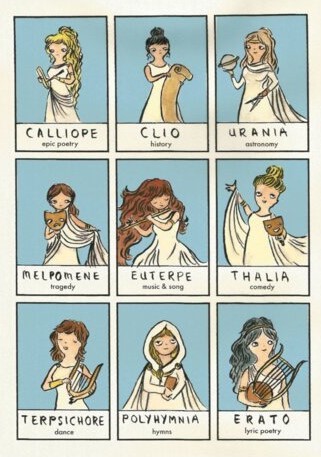
As I'm currently indexing this blog or, rather, meta-tagging posts in my new version of it on the Blogger website (I will post proper link as soon as it's finished), I decided to compile a list of all the women who feature (or receive a mention however fleetingly) within it. I have tried to trawl the blog ''with a fine toothcomb'', but I'm bound to have missed a few names - oh well! Here is the list as complete as I can muster. The women appear in (broadly) alphabetical order by first name. *** NB it is still a work in progress ***
VOCALISTS & MUSICIANS
Alice Waterhouse (flute) * Amy Winehouse * Angel Olsen * Annie June Callaghan * Ari Up & The Slits * Be Good Tanyas, The * Billie Holiday * Bjork * Black Belles, The * Cait O’ Riordan (Pogues) * Calista Williams (Bluebird) * Cindy Wilson & Kate Pierson (The B52s) * Cistem Failure * Clementine Douglas * Cosey Fanni Tutti * DakhaBrakha (well, 3/4 of them!) * Debbie Harry * Edith Piaf * Elizabeth Morris (Allo Darlin') * Holly Golightly * HoneyLuv * Katy-Jane Garside * Kelis * Kim Deal (Pixies & Breeders) * Maxine Peake * Maxine Venton & Mimi O'Malley (Captain Hotknives) * Meg White * Melanie Safka * Nico * Nina Simone * Patti Rothberg * Penny Ford (Snap!) * PJ Harvey * Rhoda Dakar (Special AKA) * Seamonsters, The * Siouxsie Sioux * Suzanne Vega * Tray Tronic * Trish Keenan (Broadcast)
VISUAL ARTS
Annegret Soltau * Anne Ophelia Dowden * Artemisia Gentileschi * Barbara Regina Dietzsch * Beverly Joubert * Camille Claudel * Clara Peeters * Dale DeArmond * Doreen Fletcher * Eleanor Fortescue-Brickdale * Élisabeth Sonrel * Elisabetta Siriani * Elizabeth Mary Watt * Ella Hawkins * Evelyn De Morgan * Frida Kahlo * Gertrude Abercrombie * Helen Martins * Kate Gough * Laura Knight (Dame) * Leonora Carrington * Lily Delissa Joseph * Liza Ferneyhough * Magdolna Ban * Mandy Payne* Mary Delany * Miina Akkijrkka * Ndidi Ekubia * Pamela Colman-Smith * Paula Rego * Rachel Gale * 'Romany Soup' * Sarah Vivien * Shirley Baker * Siirkka-Liisa Konttinen * Sofonisba Anguissola * Sonia Delaunay * Tish Murtha * Vali Myers * Vanessa Bell
COMEDY, DANCE & DRAMA
Alicia Eyo & Carol Morley ('Stalin My Neighbour') * Claire Foy * Daisy May Cooper * Gabrielle Creevy & Jo Hartley ('In My Skin') * Isadora Duncan * Jessica Williams ('Love Life') * Lesley Sharp, Michelle Holmes & Siobhan Finneran ('Rita, Sue & Bob Too') * Michaela Coel ('I May Destroy You') * Morgana Robinson * Samantha Morton * Yasmin Paige (Jordana Bevan in ‘Submarine)
WRITERS, JOURNALISTS, SCHOLARS & POETS
Agatha Christie (MBE) * Andrea Dunbar * Anaïs Nin * Angela Thirkell * Anna Funder * Anna Wickham * Edith Holden * Elizabeth O'Neill * Enid Blyton * Harriet Beecher Stowe * Helen Castor (Dr.) * Hilary Mantel * Janina Ramirez (Dr.) * Jeannette Kupfermann * Jenny March (Dr.) * Jenny Wormald (Dr.) * Lia Leendertz * Mary Oliver * Orna Guralnik (Dr.) * Rachel Beer * Susie Boniface * Virginia Woolf
HISTORICAL FIGURES
Anne, Queen of Great Britain * Anne Boleyn, Queen of England * Anne of Cleves, Queen of England * Boudicca, Queen of the Iceni * Cartimandua, Queen of the Brigantes * Catherine de’ Medici, Queen Consort/Regent of France * Catherine Parr, Queen of England * Catherine of Aragon, Queen of England * Catherine of Valois, Queen of England * Christine de Pizan * Cixi, Empress of China (aka Empress Tz'u-hsi ) * Eleanora of Austria, Queen of France * Eleanor of Aquitaine, Queen of France; Queen of England; Duchess of Aquitaine * Eleanor of Castile * Eleanor Talbot ("The Secret Queen") * Elizabeth I Queen of England * Elizabeth Woodville, Queen Consort of England * Elizabeth of York, Queen Consort of England * Elizabeth Stuart, Queen of Bohemia * Hatshepsut, Pharaoh of Egypt *Hildegard of Bingen * Isabeau of Bavaria, Queen of France * Isabella I, Queen of Castile * Isabella of Aragon, Princess of Asturias * Isabella of Portugal, Empress Consort of Holy Roman Empire and Queen Consort of Spain, Germany & Italy * Isabella of France, Queen of England * Jacquetta of Luxemburg * Jane Grey (Lady), Queen of England for Nine Days * Jane Seymour, Queen of England * Juana (aka Joanna), Queen of Castile * Katherine Howard, Queen of England * Louise of Savoy, Regent of France * Margaret of Anjou, Queen Consort of England * Margaret of Austria [check which one] * Margaret Beaufort, Lady * Marie Antoinette, Queen of France * Mary I, Queen of England * Mary II, Queen of England, Scotland & Ireland * Mary, Queen of Scots * Mary of Austria [check which one] * Mary of Burgundy, Duchess * Matilda, Holy Roman Empress * Melisende, Queen of Jerusalem * Sophia of Hanover, Electress * Tatya Betul, Empress of Ethiopia * Theodora, Empress of Byzantium * Victoria, Queen of England & Empress of India
SAINTS & BIBLICAL/CHRISTIAN REFERENCES
Anna (wife of Tobit) * Apollonia (Saint) * Barbara (Saint) * Catherine of Alexandria (Saint) * Ecclesia * Eve (the first woman) * Felicitas of Rome (Saint) * Genevieve (Saint) * Godeberta * Jael * Jezebel * Judith * Lucy (Saint) * Margaret of Scotland (Saint) * Mary Magdalene * Rahab * Rose of Lima (Saint) * Synagoga * The Queen of Sheba * Thérèse of Lisieux (Saint) * Virgin Mary, The* "Whore of Babylon", The * Ursula (Saint)
MYTHOLOGICAL
Anat * Asherah * Astarte * Atalanta * Aurora * Baba Yaga * Circe * Chhinnamasta * Clio/Kleio * Demeter (Rmn: Ceres) * Dido, Queen of Carthage * Durga * Elaine of Astolat * Europa * Eurydice * Hathor * Hesperides * Io * Isolde/Iseult * Isis * Juno (Gk: Hera) * Kali * Kriemhild/Gudrun * Kudshu * Lakshmi * Persephone (Rmn: Proserpine) * Radha * Sabine Women, The * Sati * Sedna * Sirens, The (half-female, half-bird) * Three Graces, The * Valkyries, The * Venus (Aphrodite)
WIVES, MUSES, CONSORTS & SIGNIFICANT OTHERS
Anastasia Romanovna (wife of Ivan the Terrible) * Anne Hyde (1st wife of James, Duke of York; she did not live long enough to see him become James II) * Anne Lovell (wife of Sir Francis Lovell) * Anne of Denmark (wife of James VI of Scotland/James I of England & Ireland) * Bella Chagall (wife of Marc Chagall) * Catherine of Braganza (wife of Charles II) * Charlotte of Mecklenburg-Strelitz (Queen of England as wife of George III) * Clementine Churchill (wife of Winston Churchill) * Diane de Poitiers (royal mistress to the French king, Henry II) * Emma Hamilton, Lady (mistress of Lord Horatio Nelson) * Evelyn Pyke-Nott (wife of John Byam Shaw) * Françoise Gilot (partner of Pablo Picasso) * Frances Grey, Duchess of Suffolk (mother of Lady Jane Grey) * Henrietta-Maria (wife of Charles I) * Lady Martha Temple (wife of Sir William Temple) * MacDonald sisters, The (Alice, Georgiana, Agnes and Louisa) * Marguerite of Navarre/Angoulême (sister of French king, Francis I) * Mary of Modena (2nd wife of James VI and I, King of Scotland, England, and Ireland) * Mary Shelley (mentioned as wife of Percy Bysshe Shelley, though a renowned author in her own right) * Mary Soames (daughter of Winston Churchill & wife of Christopher Soames) * Mary Stuart (daughter of Charles I and mother of the future William III) * Mary Watts (wife of George Frederic Watts, and designer and artist in her own right) * Olga Khokhlova (1st wife of Pablo Picasso) * Portia (wife of Brutus) *
2OTH CENTURY & MODERN DAY
Christabel Pankhurst * Emily Wilding Davison * Emmeline Pankhurst * 'Gulabi Gang' * Hannah Hauxwell * Helen Keller * Hilary Clinton * Liz Truss * Margaret Campbell, Duchess of Argyll * Mata Hari * Melina Mercouri * Nazanin Zaghari-Ratcliffe * Rahima Mahmut * Sylvia Pankhurst *
8 notes
·
View notes
Text
Servitude || Corbeau Drabble
Synopsis: Corbeau’s world comes crashing down around her, until the Queen of France arrives and offers a way out.
A/N: At what point do drabbles stop being meta and just become fanfic? I don’t know but I guess I’m finding out!
Google Doc for easier reading!
“Here is your champion,” A sword is gestured to the near-bare form on the ground. “You have all been deceived! The rising knight you’ve adored is of the cursed sex… a woman!”
The ‘woman’ in question sat on the ground defeated, the armor which concealed her identity laid scattered around her as she was requested to strip off her armor since she had lost to her bitter rival, the knight that stood above her laughing, the crowd murmuring their shock and dismay, which only grew louder until it became a protest.
“Impossible....”
“How could she do this?”
“Disgusting! You should be ashamed of yourself, woman!”
“God has no place for you or your immoral behavior, you damn wench!”
“Yes.. yes! This is what she needs to hear!” The knight encouraged, sneering at the woman. “She must be put in her place, put before our fine justice system and tried against the fullest extent of the law!”
The woman continued to stay quiet, listening to the jeers of the crowd that only a few moments ago adored her completely. Her eyes focused on the sword pointed at her, it’s sheen forced her to stare back at her own reflection, at her own hubris. Everything that she was working for has all come crashing down around her to the sound of laughter and hate spewed at every angle around her.
“Well..?” The knight spoke, leaning down to look at the woman dead in the eyes. “What do you have to say for yourself, Jehan– or should I say… Corbeau?”
‘Corbeau’ remained silent, sitting on the ground. The knight laughed and leaned in closer. “If you’re talking... I can’t hear y--” The next few moments happened swiftly. Corbeau lunged at the knight with no warning or sign, retrieving her fallen sword and swinging wildly at him like the cornered animal she truly was. The knight would avoid most of the swings, but that wouldn’t stop the sword from slicing his cheek before guards managed to grab Corbeau to drag her away– kicking and screaming right off of the ring. “Unhand me! I’ll kill every single one of you if I have to!” Among other obscenities were bellowed by Corbeau until she could no longer be heard by the audience.
The knight held his cheek as he watched his former rival be restrained and taken away from the stadium, his gaze lifted to meet the eyes of the Queen who sat in the reserved seating for royalty, she didn’t seem shocked or angry by this turn of events; her head was tilted to the side, her smile unwavering as her servants frantically apologized and fluttered around her. She seemed more interested in Corbeau than the knight who revealed the deception.
The knight wondered what was going through the Queen’s head. If she wasn’t disgusted by what had transpired.
—-
It had been a few hours since Corbeau was taken to the cells. The only noises accompanying her were the drips of condensation and the voices of guards outside gossiping about her arrival, how shameful it was for her to cross-dress, how shameful it was for it to be revealed in front of Queen Isabeau no less! Her life as she knew it would be ruined, her reasons for doing this would be left to die and wither away, there was nothing to be done. She had no choice but to accept her coming punishment with quiet dignity.
Or so she would think.
Concerned murmuring from outside the gate would snap her from her thoughts, sitting up in her cell and looking at the door, trying to decipher what the guards were suddenly so worried about until the reason just flung the door open and entered.
“Y-Your majesty–!! You can’t go in ther–!!”
“Your concern is noted, Captain,” The queen spoke curtly, not looking at the guard that came in after her. “I must speak to that girl that was brought in. Will you allow me an audience with her?”
“I..I can’t, I simply cannot allow you to speak to her without someone watching you, there– there’s just no telling wha–”
“Will this be enough?” The queen spoke again, producing a hefty bag of coins from her robes. “I must speak to her privately, or do you need more convincing?”
“E-Err… yes.. It’s enough…” The guard clears his throat, straightening himself. “...as you wish, ma’am.”
Corbeau’s eyes blinked as she watched the scene play out in front of her, becoming even more bewildered as Isabeau walked closer to her, motioning to the guard to unlock the cell and making her way in. Corbeau cleared her throat and fumbled into kneeling on the ground, eyes dared not look at the royalty that stood before her.
“Oh, that won’t be necessary.” Isabeau waved her hand. “Please, be at ease.. I come as a friend, not as your Queen.”
Corbeau nodded furiously before standing up and looking at Isabeau. She had never thought the queen would want to speak to her, let alone at such a time as this, nor even be this close! She was frozen in place as she soaked in the features of Isabeau; the way her golden robes shimmered in what little light there was in the cell, her eyes that held a gentle softness yet pierced daggers into her soul, the smile that never seemed to tire being on her face nor the flash of rings that adorned her fingers as her hands danced around with practiced purpose of a puppeteer or conductor. Most curious of all was.. How young she looked; the Queen was definitely her senior by many years.. Yet she could pass as an elder sister– if they were related of course.
“What is your name..?” The queen asks, her hand raises slightly to encourage an answer.
“I…I am Corbeau De La Rue…” She would meekly respond back, averting her gaze. “I am.. humbled.. by your arrival, your majesty.”
The queen laughed, a light airy laugh that was suitable to someone of her stature. “Corbeau please, how many times must I repeat myself? I know it’s difficult, but I came here to talk to you as a friend, not as a queen speaking to her subject. Rest assured, there is no need for formalities here.” Isabeau would then sit on the bench adjacent to the wall she was near, motioning for Corbeau to follow suit to take a seat beside her. “..I must say, the revelation that our most promising jouster we had seen in decades being a woman was quite a surprise.. But I feel as though this is not something you decided to do on a whim.. What possessed you to pretend to be a man and partake in the tournaments?”
Corbeau didn’t want to answer, shifting awkwardly as she sat. Her mind filled with questions and anxiety that the queen of France was willing to dirty her robes and sit beside her just for the sake of being more personable to a peasant like her– does she really come as a friend, can she be trusted? There’s no real reason to not lie, looking at the situation, Corbeau didn’t have much else to lose.
“I have two younger sisters in my care,” Corbeau started. “Our mother died some time ago, a streetwalker illness took her life– my father dying several years prior. I have been the sole caretaker of them ever since. I’ve.. cross-dressed before, in order to get higher paying jobs. I eventually found my way to working in one of these tournaments, I discovered how much it paid to joust in the ring. So I learned what I could on the job, and when I was finished for the day I would train for the rest of the night, and I would continue that until I decided I was ready to compete. Then.. Well.. you know the rest I suppose.”
Queen Isabeau listened intently, not once interrupting Corbeau, her smile did not fall at any point, her head moving to the side was the only movement from her, aside from the breathing in her chest. It took her a moment to process the information that was given to her. “That’s awful..You must have struggled and sweated to work to get here. My condolences for the loss of your parents.. ” Her hand went to her heart as she said this, but the smile did not lower despite the sad tone that she spoke. Isabeau's hands would fold on her lap a second after her so-called expression of sadness. “I know we have only just met Corbeau.. But I have a proposition for you. Your plight has… inspired me. Will you hear me out?”
Corbeau was visibly taken aback by the offer, staring once again at the Queen of France who continued to baffle her time and time again in such a short order. “I… I am flattered by your offer.. But I don’t understand you at all. You’ve been incredibly kind, you’ve sacrificed all etiquette just to talk to me, ruined your robes, among other things that I’m sure you’ve also done to get here. So why me? What about me is so interesting?”
Isabeau's smile seemed to stretch a bit bigger leaning forward, chuckling. “Ah, and you’re curious too, questioning everything around you. That’s good, it speaks to your intelligence. Even better than what I expected of you.” Isabeau slowly rose to her feet and looked out, seeing if there was a guard present, turning back to Corbeau once she confirmed that there was no guard. Her smile finally dropped to a neutral state. “I will state my intentions clearly then,”
There was a breath, then Isabeau was enveloped in a purple light. It only took her form for a moment, in the next– her outfit had changed. It was black dress with purple veins throughout, red eyes adorned her head along with an absurd amount of skin showing– deeply unbecoming of the queen of France. Yet Isabeau didn’t seem afraid of being seen like this, in fact it seemed like she embraced it; she was smiling once again– the widest Corbeau had seen this whole time, the way she carried herself was beyond the usual flair of French Royalty.. No, it was like she was above that. Higher than a queen, more above an empress.
She was a goddess.
That was the only way Corbeau could describe the woman in front of her. A god in royal clothing, walking among the unworthy peasants of France. Of the world.
“...What… What the hell are you..?” Was the only thing Corbeau managed to sputter out, mouth agape at the creature before her. Corbeau wasn’t even sure if she was a woman anymore, if she even was one at all.
“Someone that can give you power beyond this world,” Isabeau replied. “I’ve listened to your tale, I see the desire in your heart and your iron will.. So, I’ve chosen you for a very special purpose– should you choose to accept it. Corbeau, do you hate this world and how it’s wronged you and your family, your sisters? Do you desire power to protect your sisters from further harm from this cruel, unjust world?”
It was almost as if Isabeau read her mind. “I… yes. Yes, I do.”
“Then listen, and listen well.” Isabeau boomed. “I will pardon you and take you and your sisters in as my own daughters; I will personally ensure that you all have food, water and shelter in my own home. You all will be given an education.. All I ask in exchange of all my blessings is your loyalty in mind, body, and soul. Offer yourself to me, so that I may bless you with a powerful gift such as mine that will help you protect your sisters now and forever..”
“And.. if I refuse..?”
“Then.. nothing happens. I leave this cell and continue my duties, you get burned at the stake for cross-dressing, your sisters fates left to the whims of whoever finds themselves in their path– but most likely death, since they’ll be branded as sisters to a witch… is that what you really want Corbeau? I see the lengths you have gone to protect your sisters as you are.. But don’t you want the power to protect them from anything?”
“...”
“There’s only one answer where everyone lives. I’m all that is standing between you and being burned alive in front of your sisters.”
Corbeau didn’t need to think about it any longer, once again kneeling down in front of Isabeau– fuck it.
“I…accept your proposal. You have my loyalty.”
“Excellent.” Light swallows Isabeau’s form again, returning her to her normal clothing and she begins to walk towards the cell door. “I shall see to your bail and make arrangements for your arrival.. Give me some time, I do not think you will be in here for much longer. Once you are released, bring your sisters whatever luggage you have and meet here by sunrise tomorrow, by then I should have some of my men escort you to the castle.” Turning to Corbeau once she opened the cell door slightly. “..Understood, daughter?”
Corbeau swallowed the re-appeared lump in her throat, not getting up from the ground or meeting Isabeau’s gaze again. “...Understood, Mother.”
Isabeau replied in a pleased hum before exiting Corbeau’s prereferral vision. Only when Corbeau heard the sound of the door leading out from the cells closing did she fall onto the floor after another minute of kneeling from fear to ensure that Isabeau was gone, ragged breathing escaping her– how long had she been holding her breath?-- Mind racing with the implications of what she had just agreed to.
Was the Queen going to make Corbeau like her, a goddess among France’s subjects? Was this going to be worth it?
Of course it was worth it. Her sisters were going to be safe, they were going to have food and shelter and an incredible shot at life.
This was everything she had hoped for and more.
#Orders to the English Troops | drabbles#tart magica#corbeau tart magica#puella magi tart magica#isabeau tart magica
10 notes
·
View notes
Text
ISABELLA OF VALOIS // QUEEN OF ENGLAND
“She was Queen of England as the wife of Richard II, King of England, between 1396 and 1399, and Duchess of Orléans as the wife of Charles, Duke of Orléans, from 1406 until her death in 1409. She had been born a Princess of France as the daughter of King Charles VI and Isabeau of Bavaria. She married Richard at the age of 6, who was 22 years her senior, to ensure peace between their countries. The fact that she was a child was discussed, but King Richard said that each day would rectify that problem; that it was an advantage as he would then be able to shape her in accordance with his ideal; and that he was young enough to wait. In spite of their age difference and the marriage being politically arranged, Isabella and Richard developed a mutually respectful relationship. Due to the age of Isabella (the Canonical law for sexual consummation being twelve), the marriage was never sexually consummated. However, Isabella and Richard enjoyed a good platonic relationship, which has been compared to that between a father and his adopted daughter or between a niece and a doting uncle. He was noted to have treated her not as a wife but rather as the daughter he and his first wife Anne never had. The king regularly visited her in Windsor, where he treated her with respect, entertained her and her ladies-in-waiting with humorous conversation, and pampered her with gifts and toys. Isabella reportedly enjoyed and looked forward to these visits.”


1 note
·
View note
Text

felicidades, v, y bienvenido a sevilla ! you have been accepted as isabeau de foix, our queen of aragon (claire foy). please be sure to review our guidelines, welcome checklist, and send in your blog within twenty-four hours.
♱ [isabeau de foix – claire foy – 33 – queen of aragon] ♱ bienvenidos ISABEAU DE FOIX. you hail from FRANCE/ARAGON and have been risen to the position of a QUEEN. you are a member of the house of DE FOIX / TRASTAMARA and will go down in history as the THE AWAITING HYDRA. though you are IMPATIENT & CONTENTIOUS, you are blessed with being DESIROUS and PERCEPTIVE. ♱ [v – she/her]
0 notes
Text
In total, Westminster Abbey received 222 cloths of gold from mourners during the exequies of Henry V in November 1422. The two largest offerings came from the absent eleven-month old Henry VI: 13 cloths of gold at Dirige and 24 cloths at the requiem mass. Queen Katherine, widow of Henry V, offered nine cloths of gold at the Dirige and 16 cloths at requiem. Next came the dowager Queen Joan of Navarre, the widow of Henry IV, who offered 11 cloths at Dirige and 13 at the requiem but then purchased back her entire offering for £33 6s 8d to the abbey. Lord Bourchier purchased back his three cloths of gold as well (one from Dirige, two from requiem), while the Count of March bartered his offered 13 cloths of gold for a single gown of “cloth of gold of Damascus.” The money went into Westminster Abbey’s coffers, while the unredeemed clothes of gold remained useful for liturgical purposes or for re-sale. In comparison, Westminster Abbey received 91 cloths of gold for dowager Queen Katherine when she died in 1437. The two largest offerings came from the King, Henry VI, with five for Dirige and seven for the requiem, and from dowager Queen Joan, four for Dirige and six for requiem. Despite the fact that it appears Henry VI celebrated the anniversary of his maternal grandmother, Isabeau of Bavaria, dowager queen of France, at the same time, Cretton is very clear about what was offered for whom. Henry VI was the only one to offer cloths of gold for Isabeau, and just two at that. Twenty- six banners were offered for Katherine, and four for Isabeau.
Anna M. Duch, "'Do This in Remembrance of Me: Offerings, dentity, and Bills in the Medieval English Royal Funeral", A Companion to Death, Burial, and Remembrance in Late Medieval and Early Modern Europe (Brill 2021)
#henry v#catherine de valois#catherine of valois#henry vi#joan of navarre#isabeau of bavaria#westminster abbey#historian: anna m. duch#the death of henry v
5 notes
·
View notes
Text
"The turbulent life and political career of Isabeau of Bavaria provides much material through which to approach a theme of queenship, reputation, and gendered power. Isabeau held an unprecedented position for a queen of France because of the extraordinary circumstances following the first attack of insanity suffered by her husband, Charles VI, in August 1392, and his subsequent descent into a distressing and debilitating state of mental illness. Isabeau was faced with political intrigues, assassinations, and acts of vengeance among the royal families of France that spiraled into civil war [...]. After the deaths of two of her sons in their teenage years from infections, Isabeau herself suffered a humiliating period of captivity at the hands of the Armagnacs in 1417, isolation politically from her last remaining son and, finally, by what one might call the most important victory of Henry V—when he negotiated an alliance with the Burgundians that would lead to the negotiation of the Treaty of Troyes.
[…] The 1402 ordinance had been a first attempt by a temporarily recovered Charles VI to break the cycle of feuding, by raising his queen as an independent force between the dukes of Burgundy and Orleans, while that of April 1403 sought to neutralize further the dukes’ potential for unlicensed absolutism through the check of quasi-majority rule. The collegiate administration was intended to prevent any one prince being able to intimidate his way to supremacy by keeping power and responsibility divided up as much as possible—as did the mere act of including the queen.
The sovereign status of Isabeau of Bavaria trumped any claims for preeminence based on seniority or blood relationship that might be pursued by the dukes, while she herself was not a force that could imperil the king. Her rank and position as queen gave her power, but that (quite clearly) was inextricably dependent on her relationship with the king and one might argue that this made her above all others more neutral, with no agenda of her own. As the king’s wife and the legal guardian of his heir, she was the most entitled to act as a proxy yet, unlike the rest of the royal family, could never be a successor herself; so she was no threat. A queen has power (the capacity to persuade people to act or make things happen) but no royal authority of her own, no publicly recognized right to rule. If authority was granted or sanctioned by the king, and recognized by his peers, a queen held it and it was legitimate, as was the case for Isabeau for most of her reign. The provisions establishing the queen as head (présidente) of the Regency Council set her into a position of substantial authority and great vulnerability. While being appealed to, buffeted and threatened by both sides in an increasingly acrimonious civil war, Isabeau was careful always to claim intermediary status for her acts, as the representative and deputy of her husband’s authority—and she needed to do so. By sheer definition, the role of queen consort was as a subordinate to the king and Isabeau had to maintain the perception that she was acting only in support of her husband, not as an independent political being with her own agenda. However, Charles VI’s selection of Isabeau as head of the Regency Council, ruling in the king’s stead in his periods of illness with all the powers of a lieutenant-general appointed in short periods of absence for war, demonstrates that the office of queen was not regarded as peripheral to monarchy, but an integral part of it that could be utilized when necessary in the service of the Crown as a corporate entity and invested by the king with the authority of kingship.
The queen’s authority would be tested to the full over the twenty years following the outbreak of the king’s madness in 1392, and first shared with, then gradually yielded to, her eldest son, the dauphin Louis, as he grew toward maturity, both in years and in diplomatic capability. As soon as it was legally possible, in the days before his thirteenth birthday, Isabeau organized Louis’s emancipation (his legal majority). Although Isabeau tended to retain chairmanship of the regency council, there were occasions after 1410 when she might easily have attended but chose not to, thereby pushing forward her son into the limelight as next in line after her as the king’s deputy. The dauphin Louis represented the king during the preliminary negotiations at Arras in September 1414, and at the later meetings at Saint-Denis and Paris in February 1415 that led to the eventual truce between the warring Burgundian and Orleanist/Armagnac factions. In fact, the phrase recorded by Michel Pintoin, the Religieux de Saint-Denis, in his account of the peace of Arras describes Louis’s role perfectly as the one “who held the reins of the State during his father’s illness."
However, the end of 1415 witnessed two disasters for France, with the desolation of the battle of Agincourt in October and the sudden death of the dauphin Louis in December. Grieving and politically isolated, Isabeau of Bavaria would spend the remainder of her life, another long 20 years, as subsumed and powerless as the rest of the country in the disaster of division and conquest. She was imprisoned by the Armagnac faction in 1417, who issued an ordinance establishing her last remaining son, the future Charles VII, as the king’s deputy instead. It is an interesting coda to this discussion of the regency provisions to consider their later misuse as well. Although Isabeau was in no position to exert power herself in 1417, the ordinance of April 1403 naming her as the king’s deputy in periods of emergency Council-run government seems only to have been replicated (not revoked) when the dauphin was granted his title. By arguing that the grant of powers to Isabeau in 1403 was irrevocable, as Burgundy would claim when releasing her from captivity in 1418, it was worth his while to fund her and establish her as the figurehead of a rival regime, seeking to regain possession of the person of the king. Isabeau of Bavaria found herself in an unenviable situation, with no financial backup of her own, no power base, and absolutely no prospect of being able to take back government herself. In such a scenario, control of the queen and her authority, by neutralizing her in prison like Armagnac or, like Burgundy, by persuasion or coercion, or perhaps even deceptive use of her titles and seals with no attempt or interest in gaining her consent or not, remained the ultimate weapon in the civil war. Regency authority somehow endured, despite the essential powerlessness personally of the individual regent queen."
-Rachel C. Gibbons, "Isabeau of Bavaria, Queen of France: Queenship and Political Authority as “Lieutenante-Général” of the Realm", Queenship, Gender, and Reputation in the Medieval and Early Modern West, 1060–1600 (Edited by Zita Eva Rohr and Lisa Benz)
#isabeau of bavaria#french history#queenship tag#historicwomendaily#women in history#15th century#hundred years war#charles VI#my post#not sure if i should tag henry v or Charles vii
11 notes
·
View notes
Photo
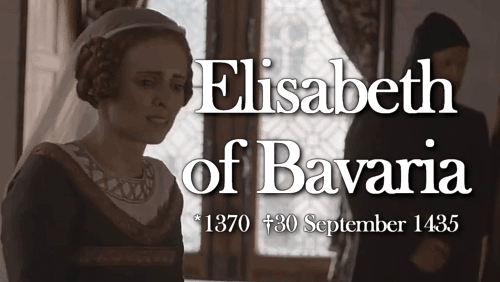
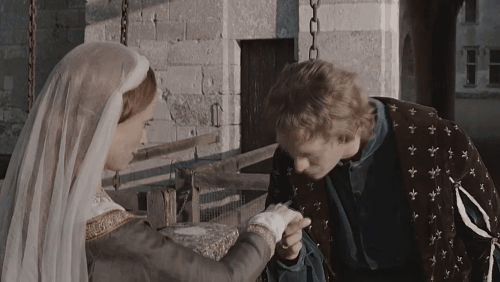
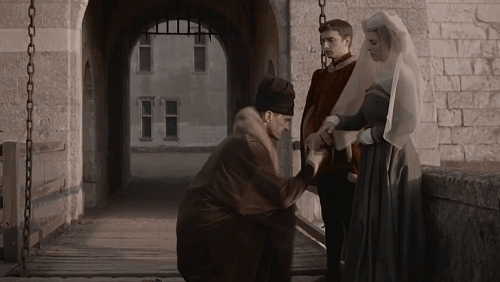
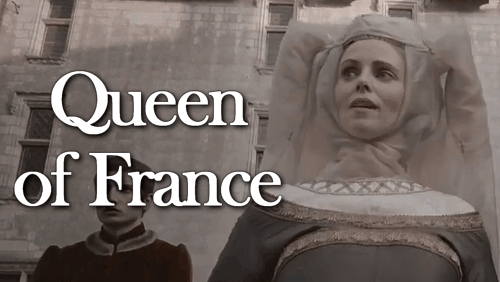
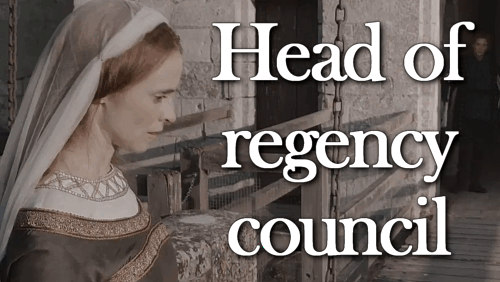
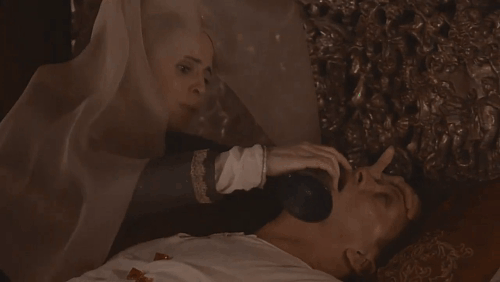

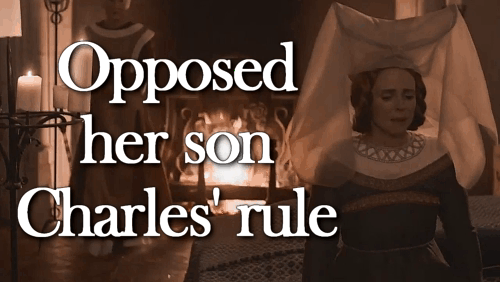
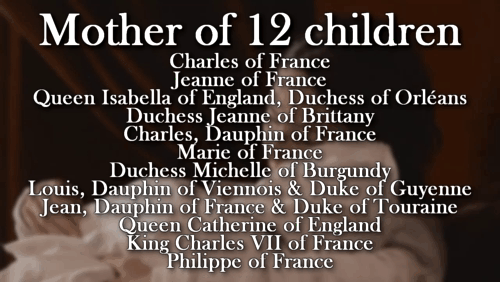
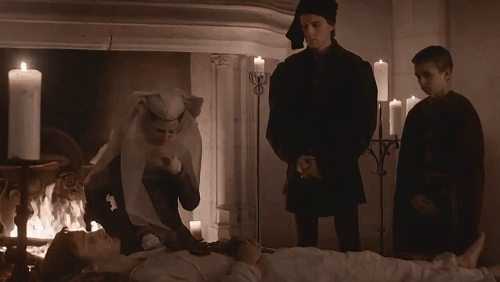
House of Wittelsbach & of Valois: Elisabeth or Isabeau of Bavaria
Elisabeth was born as the second child to Duke Stephen III of Bavaria(-Ingolstadt) and his first wife Taddea Visconti. Her older brother was Duke Louis VII of Bavaria. Elisabeth is often referred to by the French version of her name Isabeau as well as Isabelle.
Elisabeth’s uncle Duke Frederick of Bavaria suggested her as French queen consort when she was only 13. At the double wedding of John the Fearless and Margaret of Burgundy to Margaret of Bavaria and Duke William II of Bavaria-Straubing two years later, he proposed this idea again. Her future husband Charles was riding at the tournament that day. Reluctantly Elisabeth’s father agreed to send her to France to be examined as a potential bride but demanded that her uncle and brother who accompanied her would not tell her the purpose of the journey.
Charles and Elisabeth married only three days after they were presented to one another. He apparently had fallen in love with her as he continued to give her lavish gifts in the coming years. But first the couple was seperated once again as Charles had to go on campaign while Elisabeth would stay with his step great-grandmother Blanche of Navarre who taught her French etiquette.
The marriage resulted in twelve children. Many of them died young but some are famous until this day, like the English queens Isabella and Catherine of Valois as well as of cours King Charles VII of France.
Seven years after their wedding, Charles mental illness began to show. In 1393, he was declared unfit to rule and a regency council was established. Elisabeth became the head of it. This council would soon lead to a civil war between the factions of Armagnac and Burgundy whose duke’s were fighting over influence and positions at court.
After the death of his older brothers, Charles became The Dauphin of France. But he and his mother despised one another. He disagreed with her lifestyle and even thought her to have extramarital affairs. Because of this Charles’ expelled her from court. This turned Elisabeth to side of the Burgundians and she began her fight against his rule. Even claiming him to be a bastard since she no longer had to fear repurcussions. Her husband was too mad to act and the Burgundians were her allies.
Elisabeth supported her English son-in-law Henry V heir to the French throne. But Henry died in 1422, when his son Henry VI was only an infant. Only a few weeks later Elisabeth’s husband died too. She was now alone without any allies. Her final decision was to go into exile in Burgundy.
Elisabeth died on September 30th, 1435. She was buried at the Basilia of Saint-Denis in Paris until the royal tombs were scaveged during the French Revolution on October 17th, 1793. She is now buried in a mass grave outside the church.
// Catherine Zavlav as Isabeau de Bavière in The Real War of Thrones
#period drama#perioddramaedit#women in history#1400s#15th century#Elisabeth of Bavaria#Isabeau of Bavaria#Queen Isabeau of France#House of Wittelsbach#House of Valois#French history#German history#European history#Isabeau de Bavière#The Real War of Thrones#queen of france
232 notes
·
View notes
Note
Looooong post incoming
I can hear the others groaning "what have you done asking Marine about Joan of Arc ? She won't shut up...
You're absolutely right *evil laughing*
So first you have to understand that when Joan was born in 1412, France was torn between 3 different parties : The English who owned the West and South-West part of France, the Bourguignons who owned the North half of France and some parts in the East and middle, allied with the English, and finally the Armagnacs, loyal to the future King of France, Charles VII.
Joan has siblings : Jacquemin, Catherine Pierre, Jeanne (Joan) and Jean (yes, Jean). (In my OCs I only made Pierre and Catherine, and I made Catherine younger than Jean because since Cybird doesn't give a damn, I don't either)
Joan's village, Domrémy, was located in the East, a rare place not owned yet by either the English nor the Bourguignons, but still torn in half. When she was a kid, her village was attacked by several times, either by the enemies or by outlawers.
She first heard heard her voices at 13 and was scared af, before hearing them again at 16 - 17, commanding her to freed the Kingdom.
So she went to Vaucouleurs, to ask the Captain of the place, Robert de Baudricourt, a few men to lead her to Chinon, where the Dauphin was. Prophets were a common thing at that time, but Sir de Baudricourt had to chase her away several times before listening to her and lending her men to accompany her to Chinon. She was given men clothes so it won't attract attention (because they will have to cross enemy's territory) and she did cut her hair.
Once finally at Chinon, the legend says she recognized the Dauphin who was hiding in the crowd, dressed as everyone else. Then they talked in private for a moment, because Charles VII was doubtful, and apparently she told him things only himself knew, such as his personal prayers. At that time there was a prophecy saying a woman would sell France away, and would be saved by a maiden.
The first woman in question was the Queen Isabeau de Bavière (fucking bitch) who forced her spouse, King Charles VI, the crazy king, to sign the treaty of Troyes, which said that the son of the English King with his wife (which was the daughter of the French King) would be the King of France and England, despite Isabeau having a son who was supposed to be King, she just rejected him...
Anyway, so Joan was seen to be the maiden of that prophecy, but was she a virgin ? They examined her and yes she was. She then was interrogated by a trial to be sure she was righteous, she said she would freed Orléans who has been under a siege for months, Orléans was a key city, if it falls, that would allow the English to invade the other half of France. Then she said she would make Charles King of France in Reims (the city where almost all Kings of France were coroned, but was hel md by the enemy), she would take Paris back (owned by the English and Bourguignons) and will bring home the Duke of Orléans, Charles VII's cousin who was captured at Azincourt in 1415.
They asked her to give them signs, proving she was sent by God, and she replied back "I am not here to perform magic tricks, but lead me to Orléans and I will give you a proof."
Charles VII gave her an army (you have to know that the Kingdom had very little money), accompanied by Gilles de Rais and went to Blois first, to meet the other part of the army who was about to bring food in Orléans. There, she received her armor. Then they went Tours where she received her flag. But what about her sword ?
Her voices told her to go to a small village called Fierbois, look in the church, for a hidden sword who was owned by Charles Martel (I will let you Google it) and they all were surprised to find a sword there.
Then she finally rode to Orléans, where she met Dunois, the Bastard of Orléans (the bastard son of the previous Duke of Orléans, brother of the previous King Charles VI) and she asked him :
"Who asked me to be on this side of the river ?
-It was me. It was the most logical thing to do-
-I don't receive orders from you, you can keep them for you, I only hear my Lord commands.
-Did the Dauphin-
-I am talking about God."
So she said she wanted to go in the city, but Dunois told her that they won't be able to enter the city since the wind was nit favorable for the boats. She fell into a prayer and the wind changed and they were able to get in. Dunois was convinced.
They took back Orléans in a week, by chasing the English away, the 8th May 1429 (yes, we celebrate it the same day as the victory of WW2) despite receiving an arrow near the heart. They then took back several cities along the Loire river, as Patay, Beaugency, Meung sur Loire, ...
They convinced the Dauphin to ride to Reims to be made King. They were able to ride through enemy's lines without problems, and Charles VII was made King of France in the Cathedral of Reims the 17th July 1429, Joan was there, next to him.
Then, they had a hard time to have other big victories. She broke her sword after chasing prostitutes away, which was seen as a bad omen.
She tried to take Paris back, but failed and was wounded. Charles VII wanted to negociate the peace so he took back a large part of the army. Joan stopped hearing the voices after Charles VII's coronation, and many saw this as a sign for her to stop fighting.
She kept fighting until Compiègne in 1430, where she was captured by the English, along with one of her brothers, Pierre, and was imprisoned. Apparently she was deceived by a French fellow.
She was bought by the English as a prisoner (she was captured by the Bourguignons and let me remind you France didn't have much money, even her comrades in arms gave money to try to freed her, but alas, it wasn't enough bc the English gave so much money) brought in front of the bishop Pierre Cauchon, allied with the English, and in front of a religious Trial, in Rouen, to prove she was an heretic. Despite being from a modest family (she was not a poor little shepherdess like everyone believe, her father was the chief of the village, they owned lands, have a house made of stones, their own livestock, she just helped looking at the sheeps from time to time, like other kids did) she answered quite admirably at the questions, she was smart and quick.
They asked her to recite the Pater Noster, she said she would in confession, not before them. When asked how the voices sounded like, did they have an accent ? She replied "they were speaking a very good French, unlike you."
It laster long tiring days, where she was threatened to go under torture, showed her the stake, and she was scared, she abjured first, to be saved, was given a dress and went back in jail.
Apparently, she put back men's clothes, meaning she relapsed (which was a very matter) and refused to abjure her voices.
She was sentenced to death by the fire as an heretic (the charges against her were quite long and if you ask me, shockingly stupid), casted away from the Catholic Church and was burned at the stake the 30th May 1431 in Rouen, and to avoid any memorial and remembrance, the English threw her ashes in the Seine.
During the fire, the asked for a cross to be held in front of her eyes and screamed "Jesus" until she died. When the executioner saw that her heart didn't burn, nor her intestines, he screamed in horror "what have we done ? We didn't burn a witch, we burned a Saint !" He cried and refused to do another execution after that.
She was found innocent in 1456 after a rehabilitation trial, asked by the King Charles VII and the Pope. (Because Charles VII better did, to be seen legitimate, for being coroned by a Saint and not a witch)
She was officially recognized as a Catholic Saint in 1909 after many years of the Bishop of Orléans fighting for it.
We've been celebrating the Freedom of Orléans since 1430 - 1431 with big festivities, thanks to Gilles de Rais, who ruined himself to create and pay for them.
Now it's a tradition, for several days, there are many activities held, and the 8th May, "Joan" and her knights, ride through Orléans, wearing armors and riding horses, doing the same road Joan did in 1429.
Every year, a young girl from Orléans, between 15 and 17 years old, Catholic and doing charity, is chosen to be Joan. Last year, the direct descendant of Pierre d'Arc (Joan's older brother) was incarnating Joan.
I didn't mention some stuff, because the story of Jeanne d'Arc, and the Hundred Years War context is WAY more complex, but here are the basics. Thank you for reading this far (you asked for it 👀)
You can find my OCs in my blog, sometimes I add additional information, and I will keep doing it on future posts
THE WAY YOU DRAW JEAN IS SO CUTE IT MAKES ME WANT TO PLAY HIS ROUTE EVEN THOUGH I DON'T DIG THE EYE PATCH D:
You're so talented 😍
I- THANK YOU 🥺😭😭💖
Well, of course I only can encourage you to read his route because it's a really good one no I'm not biased at all and I haven't read it like 6 or 7 times already
Despite a moment where Comte explains the context of Jean's death way too quickly and too simply, forgetting essential stuff to understand the whole stuff, where I was like "bitch, I was born in Orléans, I have a lot of books about Joan of Arc and the Hundred Years War, stop trying to educate me so badly." But heh, that's just me I guess.
ANYWAY
Thank you again for your kind words 🥺😭💖
19 notes
·
View notes
Text
Educating the princesses
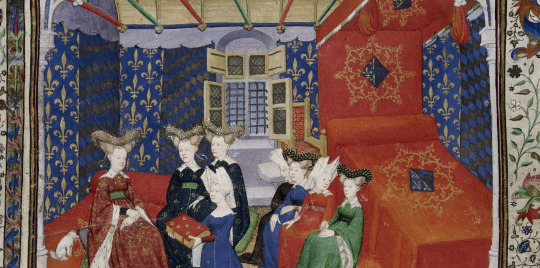
“All of these princesses, both foreign and French, had received a first-rate education. Some were raised at the French court from childhood, such as Philip IV’s wife Joan of Navarre and Charles VIII’s young fiancée Margaret of Austria. Others were educated within their own families in their respective principalities.
Educators had long debated what women should be taught. In 1265, Philip of Novara had advised against teaching girls—except for nuns— how to read and write. He was, however, in the minority. Far from being neglected when it came to aristocratic education, women were the recipients of veritable miroirs aux princesses (didactic works presenting the exemplary image of the good ruler or, for women, the ideal princess), which reveal all the care that went into their training—as religious as it was moral and intellectual.
(...)
Beyond these theoretical treatises, sources on the practice of that time provide information about the educational methods of the period. Young princesses learned to read and often write. Such instruction often took place within the palace under a tutor. At the court of Savoy in the mid-fifteenth century, Pierre Aronchel was the schoolmaster of Louis and Anne of Cypress’s eldest daughters Margaret and Charlotte (future wife of Louis XI).
Like their brothers, young princesses first learned reading and religion. They learned to read using an alphabet book (Margaret of Austria learned the alphabet using a book handsomely bound in black velvet) and continued with psalters and books of hours. At the age of seven, young Joan of France, who was married to the Count of Montfort, received a richly illuminated book of hours of Notre-Dame from her mother Isabeau of Bavaria. During the fourteenth century, young girls at the court of Savoy practiced reading using liturgical collections, matins and penitential psalms, which were replaced by books of hours in the fifteenth century. Like their brothers, Savoyard princesses also learned to write.
Latin, however, was reserved for boys, which was one of the primary differences when it came to education. Princesses only knew the necessary prayers and formulas for following mass and reading their books of hours. There were a few exceptions nonetheless. Saint Louis’s sister Isabella of France (d. 1270), for example, was reputedly an excellent Latinist.
Failing Latin, aristocratic ladies knew other languages. John II’s future wife Bonne of Luxembourg, who had been raised in Bohemia, spoke Czech, German and French. Yolanda of Bar —daughter of Robert, Duke of Bar, and wife of John I, King of Aragon—could read ‘Limousin’ and Latin in addition to being able to write in French and Catalan. Others had a harder time learning a foreign language. During her entry ceremony in Paris in 1389, Isabeau of Bavaria was criticized for her poor understanding of French—four years after she had arrived in the kingdom.”
Queenship in medieval france 1300-1500, Murielle Gaude-Ferragu
#history#women in history#women's history#queens#middle ages#medieval women#france#french history#medieval history#isabeau of bavaria#Joan of navarre
103 notes
·
View notes
Text
The campaign of propaganda against Valentina Visconti
Irritated by her sister-in-law's calming effect upon the troubled king (while she was rebuffed frequently by him), it seems that Isabeau set to besmirching Valentina's good reputation. Valentina was Italian, and, "as everyone knew", Italy was a nation of poisoners and sorcerers. Charles's illness was reinterpreted; no longer a judgement upon the behavior of his uncles or the misgovernment of his advisers, the unfortunate king was recast as the victim of Valentina's sorcery and enchantment. A rumor started to circulate to the effect that Valentina had bewitched the king; she was the cause of his illness and the obstacle to its cure. As it was rumor there was no need to prove such a claim; its mysterious nature bilked direct proof or formal demonstration, and Valentina's enemies were able to condemn her without a tribunal. To this a concomitant rumor was pressed into service: the classic tale of a poisoned apple and the death of a little prince. Valentina's enemies leapt into the fray to exploit the sad death of her young son Louis in September 1395. It was whispered that she had planned to remove the young dauphin but that instead her own son, who was playing with the other royal children, ate the tainted fruit and died of poisoning. The story was picked up by Froissart, keen to deride a woman whom he believed to be ambitious with aspirations above her station.
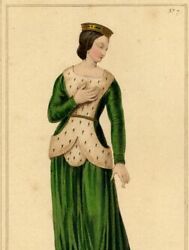
Ambitious Valentina is a them that crops up from this time and one that Jean the Fearless of Burgundy recycled on the occasion of his Justification for the murder of Orleans. It was a "known fact" (the rumor reported) that upon Valentina's departure from Milan to marry Louis of Orleans, her father, Giangaleazzo, bid her a fond farewell with the words: "Adieu, belle fille! je ne vous vueil jamais veoir tant que vous soyez royne de France." (Good-bye, beautiful daughter! I do not expect to see you again until you are queen of France!) [..]
Initiated by the rumor of evil spells linked to and fueled by the "known" sorcery habits and nefarious aspirations of Valentina's father, Isabeau's bespoke campaign of propaganda against her sister-in-law aimed to remove Valentina's considerable potential for influence by ensuring that she would have no further personal contact with the king, the princes, the people, the conduct of the business of the kingdom, or to take any action which might be contrary to Isabeau's projects and ambitions. Valentina was to be disloged from court, distanced from Paris, and relegated far beyond the center of political decision making. With Isabeau's campaign, Valentina was reduced to powerlessness and separated from the royal family and her allies. Eugène Jarry expresses well Isabeau's strategy:
"Isabeau did not forget the duchess of Orleans' influence over the mind of the king. Her plan was mapped out: it was absolutely necessary to remove the daughter of the duke of Milan. This outcome was achieved by the most cowardly of schemes. The outburst of negative public opinion against Valentina was too precise not to have been stirred up by interested parties."
Here Jarry links public opinion to interested parties. Isabeau was not the only interest party; the house of Burgundy carried its share of responsibility even though Burgundy was content enough to allow Orleans to divert himself with his Italian dreaming. Philippe was cordial and welcoming to Valentina, but his political reality dictated that he needed to work toward removing Orleans from all participation in government. Burgundy's wife, Marguerite of Dampierre, countess of Flanders, was of a mind to assist Isabeau in blackening Valentina's reputation. In taking control of the government in the wake of Charles's first episode of insanity, Burgundy had positioned Marguerite to steer the young queen in the interests of their House. From 1392, Marguerite jealously guarded her pre-eminent position in Isabeau's court, and no one could gain access to the queen without her consent.
[..]
Collas claims that Marguerite had been greatly put out by Valentina's arival and her subsequent drop in status; she was henceforth the middle-aged sister in law of the defunct king while Valentina was the cherished younger sister-in-law of the current king.
The mud stuck and, for her own safety, Orleans removed Valentina from court. Froissart records that such were the murmurings of the public that had Valentina not withdrawn she might have been attacked and lynched by a Parisian mob that believed she meant to poison the king and his children.
Zita Eva Rohr- True Lies and Strange Mirrors: the Uses and Abuses of Rumor, Propaganda and Innuendo During the Closing Stages of the Hundred Years War, in Queenship, Gender and Reputation in the Medieval and Early Modern West
#xiv#zita eva rohr#true lies and strange mirrors#isabeau de bavière#queens of france#charles vi#valentine visconti#louis i d'orléans#giangaleazzo visconti#jean i de bourgogne#marguerite de dampierre#armagnacs vs bourguignons#hundred years war#reputation and propaganda
7 notes
·
View notes
Text

Christine de Pizan with Queen Isabeau.
Master of the Cité des Dames, c. 1410–1414.
Picturing a scene of Queen Isabeau receiving Christine de Pizan's 'Le Livre de la Cité des Dames' (which begs the question, did they meet in real life? Answer: Probably).
Illumination on parchment, from Christine de Pizan's 'Book of the Queen', stored at the British Library.
It's time to refresh my memory on Isabeau of Bavaria, of whom I've written about before on this blog (link here). The notes in one of my old notebooks tell me she was the mother-in-law to two Plantagenet kings. Her eldest daughter, Isabella of Valois, married Richard II of England (she was six years old and Henry, a widower, was 22 years her senior; it was agreed that consummation of the marriage would not take place until she was at least 12 years old), while Isabeau's youngest, Catherine of Valois, married Henry V (she was 19, and following Henry's death she went on marry Owen Tudor, remember, grandfather of the man who would become Henry VII and begin the Tudor dynasty).
Isabeau herself was only 15 years old when she married Charles VI of France. My notes are as follows:
History wasn't kind to her and she stands condemned as a spendthrift and sexually promisicuous, but was this propaganda? She denied her own son, [the Dauphin Charles who eventually went on to become Charles VII of France], as heir to the throne by saying he was illegitimate. Why? Her husband was known as Charles the Mad on account of bouts of mental illness (Is he the one who thought he was made entirely of glass? ANSWER: YES.) Isabeau stood in as regent during these periods. She lived between c. 1370-1435 and gave birth to twelve children - eight survived to adulthood.
So, more to explore. A quick scan of the young Isabella's history on Wikipedia says Richard died in 1400, so she would have been about ten years old and had a lucky escape there. She then went on to marry her cousin when she was 16 and he a mere 11 years old. At the age of 19 she died in childbirth, presumably with their child. What a life.
NOTE: I need to gen up on the Treaty of Troyes (1420). [Not to be confused with the Treaty of Troyes (1564) or the Treaty of Troyes (1814)]. It must have been drawn up while Charles VI was incapacitated; did he ever become aware of the terms? Essentially, his son, the Dauphin Charles, was disinherited from the succession (hence my earlier notes that Isabeau "denied her own son, Charles VIII, as heir to the throne by saying he was illegitimate. Why?"), and marriage was arranged between Charles' and Isabeau's daughter, Catherine, and Henry V of England. Henry was made regent of France and was acknowledged (along with his future sons) as successor to the French throne.
Pilfered from Wikipedia:
The treaty was undermined by the deaths of both Charles VI and Henry V within two months of each other in 1422. The infant Henry VI of England [Henry's son with Catherine] became King of both England and France, but the Dauphin Charles also claimed the throne of France upon the death of his father.
Henry died of a serious, undiagnosed illness in 1422 aged 35 and consequently did not live to be crowned King of France. I haven't yet ascertained the cause of death for his father-in-law, who died shortly afterwards aged 53. Events became even more complicated; Isabeau was imprisoned by her son, rescued by John the Fearless, duke of Burgundy, but then deserted by him when he went to join the new French king fight against the English. Somewhere along the line, Joan of Arc got involved.
0 notes